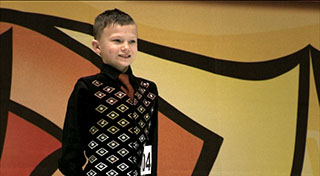5 How important is the family environment?
Activity 3 illustrates the potential influence that parents have over their child’s recreational activities, and we must therefore consider what factors contribute to parental beliefs and motivations as regards physical activity. To help answer this question we can look at research into family characteristics. Bailey and Morley (2006, p. 20) reviewed a range of literature in this area and found that particular family characteristics strongly support participation in youth sport. These are:
- Parents achieved high standards within sport;
- Parents are of relatively high socio-economic status;
- Parents possess the ability and willingness to support the child financially;
- Parents are willing to dedicate large amounts of their own time to support the child’s participation in an activity;
- The parents own a car;
- The family size is relatively small;
- There are two parents;
- The child attends an independent school.
This research suggests that although the parents’ willingness to invest time in their child’s activities is a contributor, there are other factors that may be beyond the parents’ control, such as owning a car or being able to offer financial support. In addition, Porter (2000) found that parents are more supportive of activities that are easy to access, a safe play environment, good ‘drop-off’ arrangements and where activities are available to other members of the family, therefore convenience may also play a part. The point regarding family size is interesting; consider how this impacts on parents’ time and money if they have five children all wanting to participate in different activities, as opposed to those parents who can invest all their time and money in one child. Studies in developed nations generally indicate that elite athletes are more likely to come from middle- or upper-class families (Fraser-Thomas and Côté, 2006).
Activity 4 uses a case study to which we can apply Bailey and Morley’s findings. In the video we meet two boys who go on to compete at the Irish Dancing World Championships. We will return to this video and the story of the two boys throughout this study topic.
Activity 4 The Great Irish Dance Off
Watch the video clip ‘The Great Irish Dance Off’, which follows two Irish dancers on their journey to the World Championships, then answer the following questions.
- Compare the family characteristics of the two dancers to the eight characteristics listed above. Do they support Bailey and Morley’s findings?
- Do you feel that some of the eight criteria are more important than others? Go to the tutor group forum and rank the criteria you feel are the three most important, stating reasons for your answer.

Transcript: The Great Irish Dance Off
The Great Irish Dance Off video and transcript © Bankside Films
Discussion
- John’s circumstances meet some but not all of the criteria. John has achieved high standards, although his coach states that, ‘If John was in his class four or five times a week like the rest of his competitors probably are then he would be unbeatable, unfortunately he is one of five, they’re all playing football and going in different directions, and Irish dancing is expensive’. Joe’s family appear to fit more of the criteria. They are from a higher socio-economic background, as his dad used to own a successful medical practice. He is an only child and the sole focus of his parent’s time and money; they even moved country to boost his chances of success. These differences in family circumstances are influential as John’s larger family means that he is given less chance to participate than Joe. It will be interesting to see what effect, if any, this has in terms of their success later on.
- Although John’s family do not meet as many of the criteria as Joe’s family, the boys are equally successful. This would suggest that perhaps some factors are more predictive of participation than others. Through contributing to the tutor group forum and responding to other postings you should engage in an extended discussion around this topic.
Certain sports appear to attract certain family characteristics. More than a third (37%) of British medal winners at the London 2012 Olympic Games were privately educated, with athletes from private schools dominating in rowing and equestrian events (Vasagar, 2012). However, Activity 4 illustrates that research can only tell part of a story and that there will always be exceptions to statistics such as these. Many athletes come from backgrounds in which family resources are limited. This suggests that although environmental factors can be influential, there are other contributing factors that are sometimes more important, such as attitudes and beliefs. It is to these psychological factors that we now turn.
